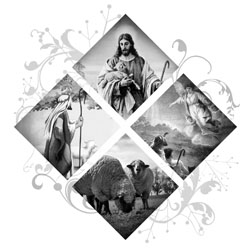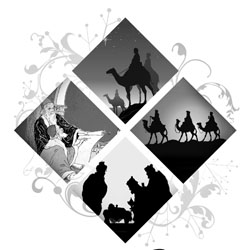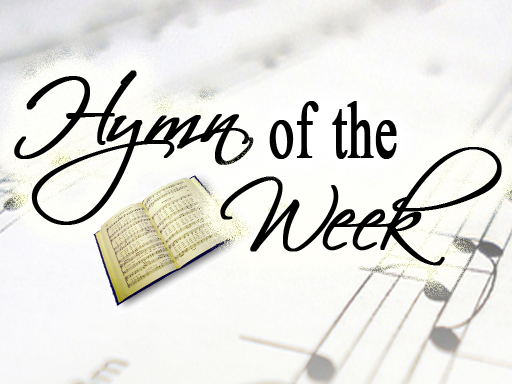The Parable of the Birds
Author: Louis Cassels, 1922-1974
Genre: Parable, 20th Century
Reading Time (for story text): approx. 3 minutes
Background:
Louis Cassels was born and raised in South Carolina. After graduating from Duke University in 1942, he joined the Air Force to serve during World War II. Over the course of his three years in the army, Cassels worked as a communications officer and then a first lieutenant. Soon after the war ended, he took a position as a correspondent with United Press International. He served in this capacity for twenty years before becoming senior editor in 1967, a position he held for the remainder of his life.
From 1955-1974, Cassels authored the popular column “Religion in America.”1 Cassels was a devoted Christian, and in the last ten years of his life, he wrote over a dozen books that were all dedicated to issues of faith. Some of his notable publications were: Your Bible (1967), The Real Jesus: How He Lived and What He Taught (1968), and The Reality of God (1971).
Throughout his career in journalism, Cassel’s earned a variety of prestigious awards, and his coverage of religious news earned him respect from people of all different faiths. Yet, he never compromised his conviction that truth in religion really mattered. In 1965, he wrote a book titled, What’s the Difference? A Comparison of the Faiths Men Live By, in which he carefully outlined the core doctrines of many religions. In his final chapter, “Does It Matter What You Believe?” he wrote:
“Does it really matter in the long run whether you’re a Christian, a Jew, a Moslem, or a Buddhist? Millions of people today, including many nominal members of Christian churches, are inclined to answer in the negative. They believe that all religions are basically the same, and that ‘one pathway to Truth is as good as another.’ This sounds like a wonderfully broad-minded attitude, and people who hold it usually think they are being quite modern in their approach to religion. In fact, they are simply subscribing to a very old type of religion called syncretism.
“We encounter syncretism repeatedly in the Old Testament of the Bible. When the prophets proclaimed that there is no other God than Jehovah, they were resisting the syncretism of the Babylonian civilization that surrounded Israel. Then, as now, syncretism presented itself as an extremely tolerant and reasonable kind of faith. Babylon was perfectly willing to add Jehovah to its idol-cluttered altars, if the Jews would abandon their claim that He was the only god. Had the Jews not been — in the eyes of their Babylonian neighbors — narrow-minded and fanatical in rejecting these terms, the religion of Judaism would have been simply swallowed up without a trace five thousand years ago.
“Christianity also encountered the temptation of syncretism in its infancy. The Roman civilization into which the Church was born was proud of its open-minded attitude toward all religions. As the historian Edward Gibbon has put it, ‘The various modi of worship which prevailed in the Roman world were all considered by the people equally useful.’ The Romans felt, in other words, that it didn’t matter what a man believed so long as he believed something that would comfort him in battle and keep him reasonably honest. When Christianity first reached Rome, it was accorded a warm reception. The emperor Alexander Severus added a statue of Jesus to his private chapel, which already contained figures of numerous pagan gods. Rome began to persecute the Christian Church only when it fought off the smothering embrace of syncretism, and stubbornly insisted that ‘there is no other name under heaven than Jesus Christ whereby men may be saved.’” 2
Cassels went on to say, “The heart of the Christian faith is the assertion that God has revealed himself in history in the person of Jesus Christ.”3 Truly, the idea that God became a man and walked among his creation is one of the most profound claims of Christianity. In an effort to explain God’s remarkable act, Cassels followed the example of Jesus, who used parables to teach challenging spiritual truths.
Cassels wrote “The Parable of the Birds” and distributed it through UPI (United Press Interna¬tional) in December of 1959. The story appeared in newspapers and on radio broadcasts across the country. It was so popular that it was (and continues to be) reproduced every Christmas. One of the most notable voices to introduce the story on the air was Paul Harvey (the master storyteller of 20th century radio).
In his parable, Cassels addresses some of the significant reasons why God chose to come into the world as a man – to demonstrate his love for people, to show his intimate understanding of human life and to personally deliver the message of salvation. Enjoy this moving story.
Sources:
1 Contemporary Authors. “Louis Cassels.” Gale, 2002. Retrieved October 15, 2008 from Gale Literary Data-bases. Much of the biography for Louis Cassels is drawn from this source.
2 Cassels, Louis. What’s the Difference? A Comparison of the Faiths Men Live By. Doubleday & Company, Inc., 1965, pp. 211-212.
3 Cassels, Louis, pp. 215-216.
*********************
Text of the Story:
Now the man to whom I’m going to introduce you was not a scrooge; he was a kind, decent, mostly good man. He was generous to his family and upright in his dealings with other men. But he just didn’t believe all that stuff about God becoming a man, which the churches proclaim at Christmas time. It just didn’t make sense, and he was too honest to pretend otherwise.
“I’m truly sorry to distress you,” he told his wife, “but I’m not going with you to church this Christmas Eve.” He said he’d feel like a hypocrite and that he would much rather just stay at home. And so he stayed, and they went to the midnight service.
Shortly after the family drove away in the car, snow began to fall. He went to the window to watch the flurries getting heavier and heavier. Then he went back to his fireside chair to read his newspaper. Minutes later he was startled by a thudding sound. Then another and another — sort of a thump or a thud. At first he thought someone must have been throwing snowballs against his living room window.
But when he went to the front door to investigate, he found a flock of birds huddled miserably in the snow. They’d been caught in the storm and, in a desperate search for shelter, had tried to fly through his large landscape window. Well, he couldn’t let the poor creatures lie there and freeze, so he remembered the barn where his children stabled their pony. That would provide a warm shelter, if he could direct the birds to it.
Quickly he put on a coat and galoshes and then he tramped through the deepening snow to the barn. He opened the doors wide and turned on a light, but the birds did not come in. He figured food would entice them. So he hurried back to the house, fetched breadcrumbs and sprinkled them on the snow. He made a trail to the brightly lit, wide-open doorway of the stable. But to his dismay, the birds ignored the breadcrumbs and continued to flap around helplessly in the snow.
He tried catching them. He tried shooing them into the barn by walking around them and waving his arms. Instead, they scattered in every direction, except into the warm, lighted barn. And then he realized that they were afraid of him. To them, he reasoned, I am a strange and terrifying creature. If only I could think of some way to let them know that they can trust me — that I am not trying to hurt them but to help them. But how?
Any move he made tended to frighten and confuse them. They just would not follow. They would not be led or shooed, because they feared him.
“If only I could be a bird,” he thought to himself, “and mingle with them and speak their language. Then I could tell them not to be afraid. Then I could show them the way to the safe warm barn. But I would have to be one of them so they could see and hear and understand.”
At that moment the church bells began to ring. The sound reached his ears above the sounds of the wind. And he stood there listening to the bells pealing the glad tidings of Christmas. And he sank to his knees in the snow.
“Now I understand,” he whispered. “Now I see why you had to do it.
Copyright © 1959 by United Press International/Louis Cassels. Used by permission of United Press International. All rights reserved. Note that the original story was not available. When it was first distributed, editors of newspapers and radio programs freely altered the title and the text in literally hundreds of media outlets across the country. The above version is one that is widely circulated today.
********************
This page was created by:

Back to main Christmas Stories page.
We welcome your ideas! If you have suggestions on how to improve this page, please contact us.
The content for the background is drawn from our Christmas book and has a copyright © 2008 by Angie Mosteller. You may freely use this material if you cite the source and/or link back to this page.






